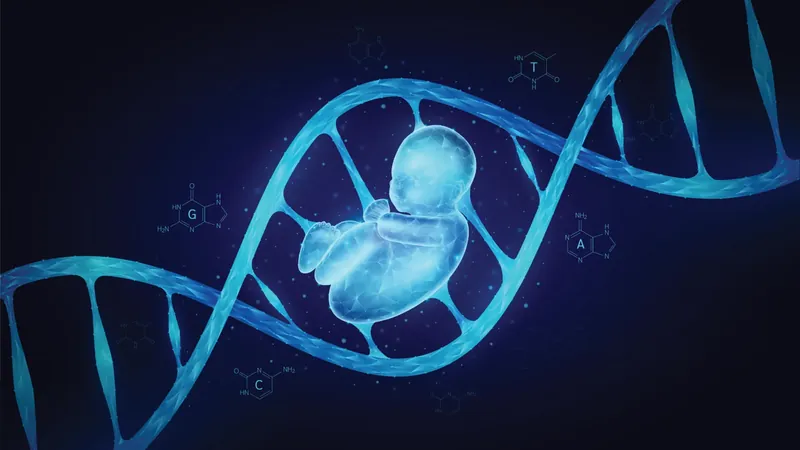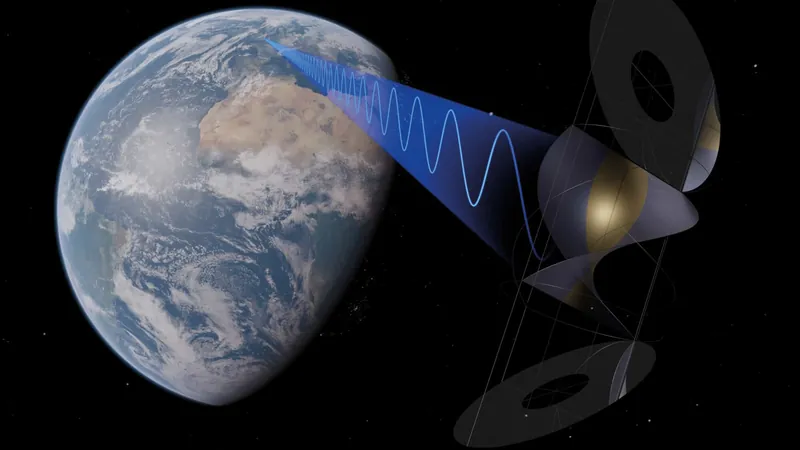
Unlocking the Secrets of Pregnancy: The Incredible Evolution of the Placenta
2025-07-06
Author: Li
The Groundbreaking Evolution of Pregnancy
Pregnancy, a fascinating evolutionary milestone, allows placental mammals—including humans—to nurture their young over a prolonged period, ensuring complete fetal development. At the heart of this process is the fetal-maternal interface, where a baby’s placenta meets the mother’s uterus. This remarkable structure must delicately balance intimacy and defense, allowing vital nutrient exchange while preventing maternal immune rejection of the genetically distinct fetus.
Exploring the Genetic Blueprint of Pregnancy
In a groundbreaking study, researchers set out to decode the origins of this intricate interface by examining the genetic activity within cells from six diverse mammalian species, including mice, guinea pigs, macaques, humans, tenrecs, and opossums. Their goal? To trace the evolutionary roots of key player cells—placental cells from the fetus and uterine stromal cells from the mother.
The study revealed astonishing insights: some genetic signatures enabling fetal invasion of maternal tissue have remained consistent in mammals for over 100 million years. This discovery challenges the misconception that such invasive attributes are exclusive to humans, asserting instead that they represent a deeply conserved feature essential to mammalian evolution.
A New Perspective on Maternal-Fetal Communication
To further understand the workings of this interface, the researchers tested two major theories. The first, the "Disambiguation Hypothesis," suggests that over time, hormonal signals evolved to clarify communication between mother and fetus. Their findings confirmed this theory; specific signals can now be traced to either maternal or fetal tissues.
The second theory, the "Escalation Hypothesis," posits a constant tug-of-war between maternal and fetal genes, with the fetus promoting growth signals while the mother attempts to restrain them. Although some evidence of this conflict was noted in select genes, the overall conclusion pointed to a highly coordinated signaling system involving both parties.
New Tools Unearth Evolutionary Treasures
Leveraging innovative techniques, including single-cell transcriptomics and evolutionary modeling, the research team unveiled how cellular communication has evolved through the ages. By simulating cellular interactions across different species, they provided fresh perspectives on the evolution of complex biological systems.
Silvia Basanta, co-first author of the study, emphasizes the implications of their findings: "Our approach opens a new window into understanding the evolution of complex biological systems—from individual cells to entire tissues." This research not only illuminates the evolution of pregnancy but also lays the groundwork for future advancements in treating pregnancy-related complications.
The Road Ahead
Conducted at the Department of Evolutionary Biology in Vienna and supported by esteemed institutions, this study is set to revolutionize how we perceive pregnancy. By unveiling the intricate dance between mother and fetus, it invites fresh questions about their evolutionary partnership, paving the way for deeper insights into reproductive health.



 Brasil (PT)
Brasil (PT)
 Canada (EN)
Canada (EN)
 Chile (ES)
Chile (ES)
 Česko (CS)
Česko (CS)
 대한민국 (KO)
대한민국 (KO)
 España (ES)
España (ES)
 France (FR)
France (FR)
 Hong Kong (EN)
Hong Kong (EN)
 Italia (IT)
Italia (IT)
 日本 (JA)
日本 (JA)
 Magyarország (HU)
Magyarország (HU)
 Norge (NO)
Norge (NO)
 Polska (PL)
Polska (PL)
 Schweiz (DE)
Schweiz (DE)
 Singapore (EN)
Singapore (EN)
 Sverige (SV)
Sverige (SV)
 Suomi (FI)
Suomi (FI)
 Türkiye (TR)
Türkiye (TR)
 الإمارات العربية المتحدة (AR)
الإمارات العربية المتحدة (AR)